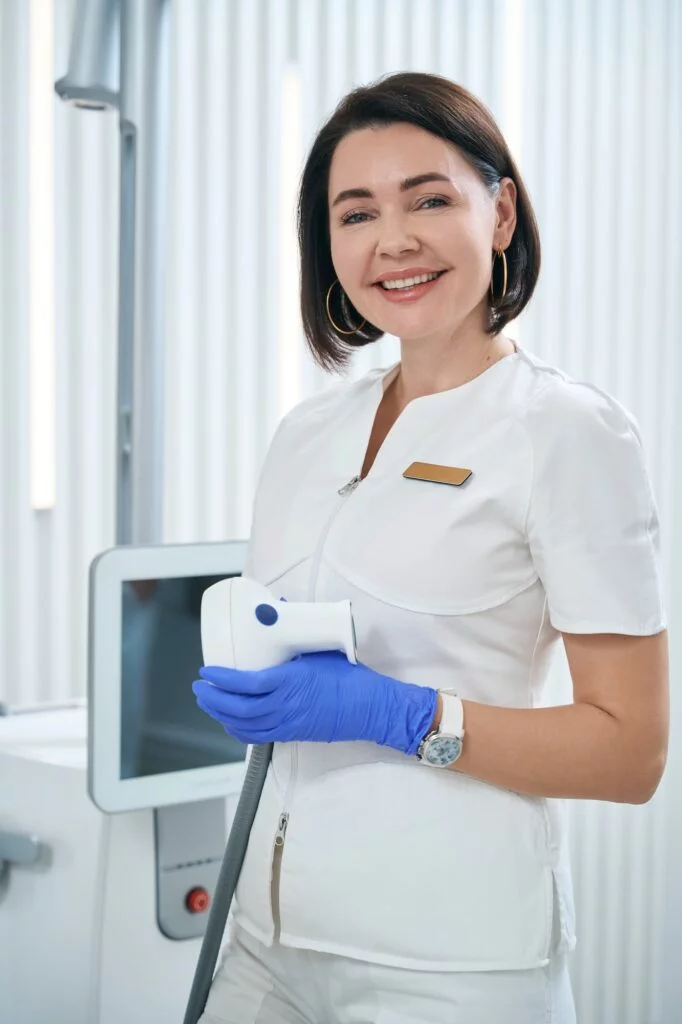A gastroenterologist may recommend an endoscopy or colonoscopy to investigate your digestive symptoms, diagnose, and treat your condition. An endoscopy and colonoscopy are often performed together.
Both are minimally invasive procedures that use highly advanced tools to allow the doctor to see into your gastrointestinal tract. Endoscopy and colonoscopy both use a thin, flexible tube with a light and fiber-optic camera attached at the end. The doctor will see your gastrointestinal tract in real-time on a screen. Now let’s talk more about the two procedures to gain a better understanding of them.
Endoscopy Vs. Colonoscopy
An endoscopy is a procedure that uses an endoscope –a thin, flexible tube — to investigate the upper gastrointestinal (GI) tract, which consists of the esophagus, stomach, and the first part of the small intestine (duodenum). During the procedure, the specialist may take a sample of tissue to be forwarded to a laboratory, for diagnostic purposes.
A colonoscopy uses a colonoscope — also a thin, flexible tube — to examine the lower GI tract, which consists of the large intestine, colon, and rectum. . In a colonoscopy, the colonoscope is inserted through the rectum.
What Can Endoscopy and Colonoscopy Diagnose?
Both procedures are used to determine what is causing the patient’s symptoms, and screen for and diagnose diseases and conditions, including gastrointestinal cancers. They are also used to take tissue samples, extract polyps, remove foreign objects, and stop bleeding. The advanced tools are equipped with a snare that can pick up tissue samples and take out abnormal growths.
According to researchers at Johns Hopkins Medicine both procedures should be performed on the same day whenever medically appropriate. Patients reap the benefits of avoiding repeated anesthetic or sedative use, as well as lower health care costs when both tests are bundled.
What Happens Before, During, and After the Test? Will It Hurt?
An endoscopy or colonoscopy should not hurt, but some patients do experience discomfort. The doctor will use intravenous anesthesia and a sedative to help the patient relax for the procedure. Patients are in a deeply sedated state throughout both procedures, most even fall asleep.
To prepare for an endoscopy, patients need to fast (abstain from food and drink) for eight hours, before the test. The endoscope enters through the patient’s mouth and is guided down into the duodenum. After an endoscopy, the patient’s throat may feel sore, and they may also feel bloated due to the air introduced into the stomach during the procedure.
A colonoscopy will require a lengthier preparation. Patients need to fast 24 hours before the test. For the procedure to be successful, the colon should be empty. A bowel-clearing liquid can assist patients with emptying their bowels. During a colonoscopy, the doctor inserts a colonoscopy through the rectum and examines the entire colon. After the procedure, some cramping and bloating are normal. Gas is introduced into the colon during the test.
After the test, since an endoscopy and colonoscopy use anesthetics and sedatives, it is not safe to drive after the procedure. Patients are instructed to arrange for someone else to drive them home.
Endoscopy and Colonoscopy in California
Our gastroenterologists at Genensis Healthcare Partners will provide the highest quality gastrointestinal care in California that you deserve. We use state-of-the-art technology for our screenings, diagnostics, and treatments, and are deeply committed to our patient’s health.
We also make sure you are given the results of your endoscopy or colonoscopy as early as possible once you get transferred to a recovery room, and that you get a copy of your endoscopy or colonoscopy.
If you have any questions, or if you would like to make an appointment with us, call the Genensis Healthcare Partners clinic nearest you or use our online form. We look forward to helping restore you to optimal digestive health.



